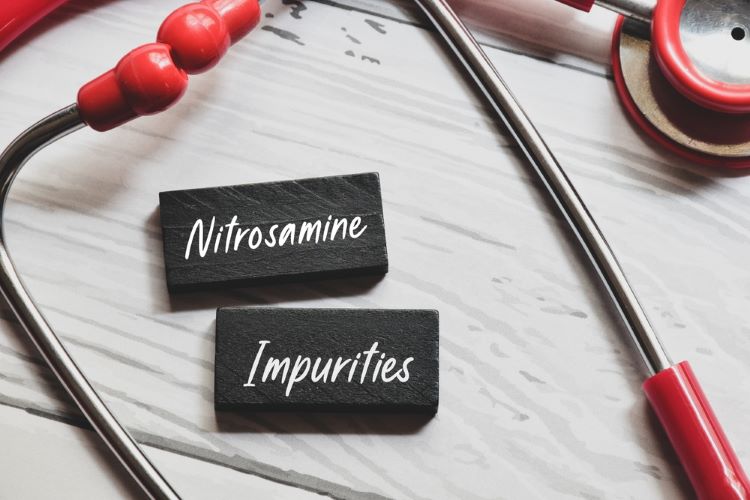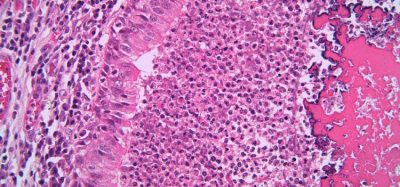Nitrosamines: the beginning of the end?
Posted: 5 September 2023 | Dave Elder (David P Elder Consultancy) | 1 comment
Dave Elder explores evolving concerns surrounding nitrosamine-related impurities while calling for continued collaboration to harmonise regulatory approaches.


It is now five years since the first reports of N-nitrosodimethylamine (NDMA) contamination in valsartan active pharmaceutical ingredient (API). Over that time-period the issue has morphed from an API contamination issue of sartans (and other APIs), into concerns about API-related nitrosamines in drug products, ie, nitrosamine drug substance‑related impurities (NDSRIs).
Unfortunately, the same regulatory strategies that were implemented for the small molecular weight (MW), highly toxic alkyl nitrosamines, eg, NDMA, continue to be applied for NDSRIs, despite mounting evidence that the larger bulkier, sterically hindered NDSRIs are less toxic;1 sometimes significantly less so, eg, N-nitrosovalsartan is Ames negative.2 A recent commentary3 questioned whether it is right to classify all nitrosamines as part of the cohort of concern (CoC). The most recent regulatory update from European Medicines Agency (EMA)4 seems to suggest it may be softening its stance with respect to NDSRIs.
EMA indicates that, “… the less-than lifetime (LTL) concept or the use of interim limits (≤178 ng/day) may be considered by the lead authority and national competent authorities (NCAs) on a temporary basis in order to inform market actions and at the same time ensure availability of medicines”.4 This is because, “… application of these adjustment factors would not be expected to exceed a theoretical excess cancer risk of one in 100,000 during the period of corrective and preventive actions (CAPA) implementation”; where the CAPA implementation period does not exceed three years.4
While international regulatory agencies continue to collaborate, ie, through the Nitrosamines International Technical Working Group (NITWIG), more needs to be done to harmonise their efforts as there are still some considerable regional differences. Notably, there is potential for regulatory agencies to establish different acceptable intakes (AIs) based on different surrogate small MW mutagens and quantitative structure‑activity relationship (QSAR) approaches.5 A related issue is that structurally similar NDSRIs can often be assigned very different AIs with markedly different mutagenic potential. For example, N-nitrosoparoxetine (a 3,4 disubstituted nitrosopiperidine) has an AI of 1,300 ng/day based on N-nitrosopiperidine (NNP);4 in contrast, N-nitrosovarenicline (a 3,5 disubstituted nitrosopiperidine) has an AI of 37 ng/day based on N-nitroso-1,2,3,6‑tetrahydropyridine (NTHP).4
there is potential for regulatory agencies to establish different acceptable intakes (AIs) based on different surrogate small MW mutagens and quantitative structure‑activity relationship (QSAR) approaches”
The European Federation of Pharmaceutical Industries and Associations (EFPIA) recently published three position papers on NDSRIs in different therapeutic categories: β-blockers/β-agonists,6 angiotensin converting enzyme (ACE) inhibitors7 and dihydropyridine calcium channel blockers (CCBs).8 EFPIA concluded that, “it is not scientifically justified to use the established AIs of potent nitrosamines as surrogates for NDSRIs”. EFPIA proposed that, until additional data is forthcoming, NDSRIs in these first two therapeutic classes be controlled as non‑CoC mutagenic impurities at the threshold of toxicological concern (TTC) limit of 1.5 µg/day.6,7
In contrast, for the CCBs the authors highlighted that as there are no α-carbon hydrogens adjacent to the secondary amine, metabolic activation to the proximate mutagen (typically a diazonium ion1) cannot occur.8 They also highlighted that under acidic/nitrosative conditions there is exclusive formation of aromatic derivatives, not NDSRIs. Indeed, for nifedine,9 two of the major impurities reported in the European Pharmacopeia are the fully aromatised impurities A and B. EMA endorses this approach for discharging risk of NDSRIs.4 It indicates, “If, despite extensive efforts, it becomes apparent that the relevant nitrosamine impurity cannot be synthesised, then this could be an indication that the nitrosamine either does not exist or that there is no risk of it being formed”.4
It is to be hoped that dialogue between the different agencies, via NITWIG, and industry continues, as control of NDSRIs is a very different challenge to controlling small MW nitrosamines, eg, NDMA.
About the author


Dave has worked in the pharmaceutical industry for 45 years for GSK, Syntex and Sterling. He is currently a CMC consultant with an interest in impurities and safety‑based limits. Dave is a member of the British Pharmacopoeia Expert Advisory Group, PCN (Pharmacy and Nomenclature) and a former member of RSC’s Analytical Division Council and JPAG (Joint Pharmaceutical Analysis Group).
References
- Thresher A, Foster RS, Ponting DJ, et al. Are all nitrosamines concerning? A review of mutagenicity and carcinogenicity data. Regul Toxicol Pharmacol. 2020;116: 104749.
- Glowienke S, Onken U, Elahjouji A, et al. Genotoxicity evaluation of a valsartan-related complex N-nitroso-impurity. Regul Toxicol Pharmacol. 2022;134: 105245.
- Ponting DJ, Foster RS. Drawing a line: Where might the cohort of concern end? Org Process Res Dev. 2023; 10.1021.acs.oprd.3c00008.
- Questions and answers for marketing authorisation holders/applicants on the CHMP Opinion for the Article 5(3) of Regulation (EC) No 726/2004 referral on nitrosamine impurities in human medicinal products. Section 22. What is the approach to control presence of N-nitrosamine exceeding the AI during CAPA implementation? 30 March 2023. EMA/409815/2020 Rev.15.
- Horne S, Vera MD, Nagavelli MD, et al. Regulatory Experiences with Root Causes and Risk Factors for Nitrosamine Impurities in Pharmaceuticals. J Pharm Sci. 2023; 112(5): 1166-1182 [see specifically Table 7].
- EFPIA position paper for NDSRIs of β-blocker and β-agonists / ACE inhibitors / dihydropyridine [Internet]. 2023 [cited 2023May]. Available from: https://nitrosamines.usp.org/t/efpia-position-paper-for-ndsris-of-beta-blockers-and-beta-agonists-ace-inhibitors-dihydropyridine/5838
- Nitroso-Derivatives of β-blocker and β-agonists. [Internet]. 2023 [cited 2023May]. Available from: https://www.efpia.eu/media/677182/position-paper-for-beta-blockers-and-beta-agonists-10jan2023.pdf.
- Nitroso-Derivatives of ACE Inhibitors. [Internet]. 2023 [cited 2023May]. Available from: https://www.efpia.eu/media/677168/position-paper-for-nitroso-ace-inhibitors-20feb2023.pdf.
- Nitroso-Derivatives of Dihydropyridine Calcium Channel Blockers (CCBs). [Internet]. 2023 [cited 2023May]. Available from: https://www.efpia.eu/media/677183/position-paper-for-nitroso-dihydropyridine-ccbs-20feb2023.pdf.
- Nifedipine monograph, No. 0627, European Pharmacopeia.
Issue
Related topics
Biopharmaceuticals, Drug Development, Impurities, QA/QC, Research & Development (R&D), Therapeutics










Great commentary Dave. I’m glad that out position papers had such an impact.